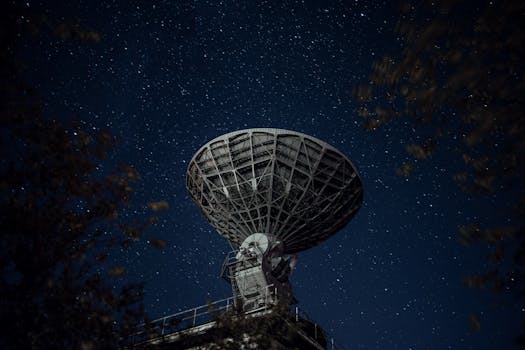Starlink: Revolutionizing Global Internet Connectivity with WordPress
Starlink is a satellite constellation launched by SpaceX, aiming to provide high-speed, low-latency internet connectivity worldwide, and its impact on WordPress and global communication

Starlink: Revolutionizing Global Internet Connectivity with WordPress
Starlink is the focus keyword that has been making waves in the technology and telecommunications industry, and for good reason. As the focus keyword, Starlink is a satellite constellation launched by SpaceX, a private aerospace manufacturer and space transport services company founded by Elon Musk. The primary goal of Starlink is to provide high-speed, low-latency internet connectivity to remote and underserved communities around the world, and its potential impact on WordPress and global communication is substantial.
The concept of Starlink was first announced by Elon Musk in 2015, with the aim of creating a network of low-Earth orbit (LEO) satellites that would provide fast and reliable internet connectivity to the entire globe. The project has been in development ever since, with numerous prototype satellites launched to test the technology and gather data. In May 2019, SpaceX launched the first batch of 60 Starlink satellites, marking the beginning of the constellation’s deployment.
How Starlink Works
Starlink uses a constellation of small satellites, each weighing around 227 kilograms, which are launched into LEO at an altitude of approximately 550 kilometers. These satellites are equipped with advanced communication technology, including phased array antennas and high-gain antennas, which enable them to transmit and receive data at high speeds. The satellites are also equipped with Hall effect thrusters, which allow them to maintain their position and altitude in orbit.
The Starlink system uses a frequency band of 12 GHz to 28 GHz, which provides a high bandwidth and low latency connection. The satellites communicate with each other and with ground stations using laser links, which enable them to transmit data at speeds of up to 10 Gbps. The system also uses advanced beamforming technology, which allows the satellites to focus their signal on specific areas, providing a stronger and more reliable connection.
Impact on WordPress and Global Communication
The potential impact of Starlink on WordPress and global communication is significant. With its high-speed, low-latency internet connectivity, Starlink could revolutionize the way we communicate and access information online. For WordPress users, Starlink could provide a faster and more reliable connection, enabling them to upload and download content, update their websites, and communicate with clients and customers more efficiently.
Starlink could also enable more people around the world to access the internet, particularly in remote and underserved communities. This could have a major impact on global communication, enabling people to connect with each other and access information and services that were previously unavailable. The potential benefits of Starlink are numerous, and its impact on WordPress and global communication could be substantial.
Challenges and Limitations
While Starlink has the potential to revolutionize global internet connectivity, there are also several challenges and limitations to consider. One of the main challenges is the high cost of launching and maintaining the satellite constellation. SpaceX has estimated that the total cost of launching the Starlink constellation could be as high as $10 billion.
Another challenge is the potential for interference with other satellite systems and radio astronomy observations. The Federal Communications Commission (FCC) has approved SpaceX’s plan to launch up to 12,000 Starlink satellites, but the company must also comply with regulations to minimize interference with other systems.
There are also concerns about the environmental impact of the Starlink constellation, particularly with regards to space debris. The satellites are designed to deorbit and burn up in the atmosphere at the end of their lifespan, but there is still a risk of collisions with other objects in orbit.







